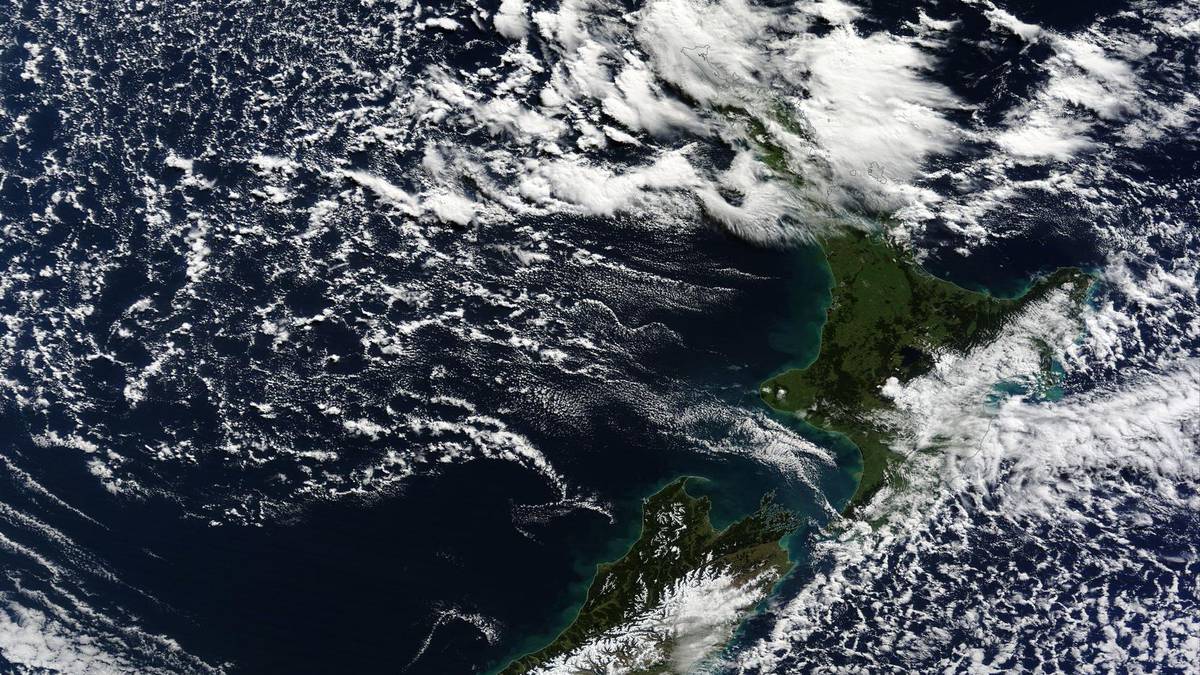[ad_1]
Footage captured of a large meteor entering the earth’s atmosphere over the top of the North Island. Video / Supplied by Logan Carpenter
A stunning event lit up the early morning sky across the top of the North Island as a meteor crossed into the earth’s atmosphere, and astronomers are on the hunt for more sightings.
Witnesses reported a large meteor soared over the North Island at 4.26am on Saturday, being spotted from Kaikohe to Auckland, with its calculated trajectory breaking up east of Dargaville.
One of five current witness accounts on Fireballs NZ said they first noticed the meteor when the paddocks in front of them lit up in a pulsing, light green hue.
“Initially I was facing away from the object (and) I turned around thinking it was a vehicle on the road that was behind me. I saw it falling from the sky in a northerly direction where it changed from green to orange-yellow.
“My relief milker who was 30 minutes north driving southwards also saw it and asked about it on her arrival. Another person on the farm also commented. I was unable to hear any sounds as I was on a motorbike. By far the biggest event I’ve seen in the night sky before. And I’ve spent a lot of hours following cows in the dark.”
Logan Carpenter captured a “fireball in the sky” on a security camera on top of his house and felt very fortunate the camera was facing the right way at the right time.
Based in Castor Bay, Auckland the amateur astrophotographer was looking at the stars through his telescope at the time and didn’t notice the event or footage until his wife checked the home security camera the next day.
“I just love all sorts of this thing and thought wow!”
Another witness reported hearing a sonic boom that sounded like an explosion lasting five to seven seconds.
Associate Professor of Geology at the University of Otago James Scott said a sonic boom results from the meteor travelling faster than the speed of sound.
He believed there will be far more people who saw the event but have not yet logged it with Fireballs Aotearoa. With more information, examiners can then analyse the trajectory and hope to recover freshly-fallen meteorites in New Zealand.
“The key thing is that this seems to be over land and not sea, and there may be a meteorite associated with it since it travelled for several seconds in the atmosphere and therefore got low.
“The colour of the fireball relates to the ionisation of elements, principally oxygen, in the meteor trail, due to the heat build-up as the rock travels through the atmosphere.
“The last part of the path was not luminescent because either all the material was burned up, or the meteorite got to a low elevation and slowed down so much that melting of the edge of the fireball ceased and the rock then entered ‘dark flight’.
“These are the most exciting because they can drop meteorites. New Zealand has 9 so far, but it is estimated that 3-4 > 100 gm meteorites should be ‘dropped’ each year on our land mass.
There are currently no Fireball cameras in the region. The Royal Astronomical Society of New Zealand (RASNZ) has just helped to sponsor the rollout of 20 Fireball cameras across the country.
Further public reports could be loaded at www.fireballs.nz.
[ad_2]
